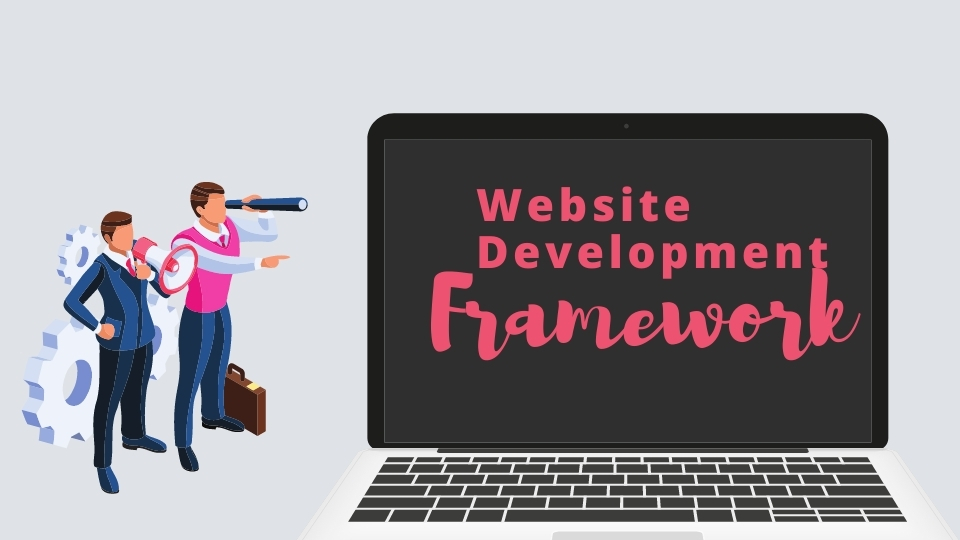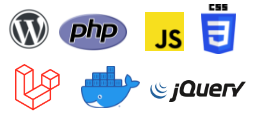What Is Web Framework? Frontend vs Backend vs UI
In website development, the term “framework” is usually related to three different categories: frontend, backend, and CSS or user interface. Developers use this framework to create applications quicker, whether it’s a web-based or desktop-based app. In this article we are going to explain what a web framework is, different types of frameworks, why use it, and which framework to use.
Getting Started
A web framework is divided into the two most important parts of web development: Frontend and Backend. These terms are very crucial for web development but are quite different from each other. Each side needs to communicate and operate effectively with the other as a single unit to improve the website’s functionality. With a framework, it will help web development.
What is a Web Framework?
A web framework is a pre-written app structure for you to help you create a web application. Practically, it’s a collection of files and directories you add your own code and files to. A framework is meant to help developers build applications quicker by addressing common development problems.
To help you understand, most websites share a very similar structure. Hence, web frameworks provide a common structure where developers can add additional features they want for their applications. Frameworks give them a place to start so that they can focus on features rather than configuration details. Therefore, the aim of frameworks is to provide a common structure so that developers don’t have to redo it from scratch and can reuse the code provided. In this way, frameworks cut out much of the work and save a lot of time.
Why Should I Use Web Framework?
A framework’s main function is to make it easier for developers to develop applications and websites. Apart from that, there are other advantages that you get from by using a framework:
Deliver a More Structured Program
Developing applications or websites without a framework tend to make developers write more programs. As a consequence, the more programs are written, the slower the debugging process. Therefore, having a framework can make the program more structured so that you can easily find the code that needs to be fixed.
Practical to Use
A framework does help to create a program faster and easier as it already provides code in the form of functions and classes. You just simply need to call the function or class into your program code.
More Secure
You don’t have to worry about the security of your program when it comes to using a framework. The security vulnerabilities of the framework have been identified by 10-100+ expert developers. In addition to that, the framework is also constantly updated to offer new features and address bugs that minimize framework security vulnerabilities.
Generally, there are two types of web frameworks based on the part of the website development: Frontend and Backend. To put it simply, the frontend is what users see and interact with and the backend is how everything works.
Frontend
What is a Frontend?
Frontend is the interface of the website with which the users see and interact with. It is also referred to as the ‘client side’ of the application. It includes everything that users experience directly, such as text colors and styles, images, graphs and tables, buttons, colors, and navigation menu. Therefore, frontend development consists of the web design and the interaction of the site.
Thus, a frontend framework is a framework to build the frontend layer of websites, web applications, or mobile apps.
What is Frontend Framework Used for?
- Building intuitive and pleasant interfaces
- Implementing structure, design, behavior, and content of everything seen on screens
- Storing, presenting, and updating data received from the back end or API.
What is Frontend Language?
In terms of programming languages, usually, Frontend consists of:
- HTML (Hypertext Markup Language) – to design the frontend portion of web pages using a markup language.
- CSS (Cascading Style Sheets) – to apply styles to web pages.
- JavaScript – a scripting language to make the site interactive for the user.
Backend
Backend is referring to the server-side of the website as it doesn’t come in direct contact with the users. It consists of the server, the database, and the code that interacts with the website or app. This also consists of the code that gives dynamic data to the frontend of the site.
Thus, a backend framework is a framework to build the part of the website that you cannot see and interact with. With this, you can write APIs, create libraries, and work with system components without user interfaces or even systems of scientific programming.
What is Backend Framework Used for?
- Stores and arranges data
- Send code for the frontend part
- Makes sure everything on the client-side of the website works fine.
What is Backend Language?
- PHP – a server-side scripting language designed specifically for web development.
- C++ – a general-purpose programming language and widely used nowadays for competitive programming.
- Java – the most popular and widely used programming languages and platforms.
- Python – a programming language that lets you work quickly and integrate systems more efficiently.
- JavaScript – programming languages for both frontend and backend.
- Node.js – an open-source and cross-platform runtime environment for executing JavaScript code outside a browser. Actually, it’s neither a framework nor a programming language.
User Interface
Besides frontend and backend, there is also a UI (user interface) framework. It helps create stylized and professional-looking web applications. Most include some sort of grid system so that you align elements, they have color schemes so that are handled for you, and they stylize your HTML components using CSS so that they look clean and professional.
The main difference between User Interface and Frontend is that the frontend is mainly about operating and running the interface running and operating. Meanwhile, UI focuses on visual looks.
Which Frameworks Should I Use?
The following lists are the most used frameworks for frontend, backend, and user interface along with their details.
Frontend Framework
Frontend frameworks are, in most cases, written in JavaScript and are for organizing the functionality, interactivity of your website.
Vue
Pros:
- Easy to learn
- Very fast
- All tools are packaged well
- Optimizes and takes parts from Angular and Reacts
- Flexible
Cons:
- Less widely adopted
AngularJS
Pros:
- Framework by Google
- Well supported
- Has many features
- Improves application scalability
Cons:
- Difficult to debug
- Large learning curve
Angular 2+
Pros:
- Framework by Google
- Well supported
- Encouraged reusability
- Improves application scalability
Cons:
- Large learning curve
React
Pros:
- Framework by Facebook
- Bundles Frontend codes into components
- Organizes code and data to make them more reusable
Cons:
- Large learning curve
Ember
Pros:
- A large amount of functionality
Cons:
- Opinionates as you must use its formatting
- Steep learning curve
Backend Framework
Backend frameworks are a lot more varied starting from programming languages and features. Choosing a backend framework should be based on the programming language it is written in. Also, take into account what features you want to add to your web app.
Spring MVC (Java)
Pros:
- Very fast
Cons:
- Less opinionated
- More difficult language to learn
Django (Phyton)
Pros:
- Easier language to learn
- Many functionalities (like user authentication, database connections, and view rendering)
- Great data handling
Cons:
- Can be difficult to integrate a fancy front-end.
- Very opinionated and less structured
Flask (Phyton)
Pros:
- Easier language to learn
- Less opinionated and more customizable than Django
Cons:
- Gives you less out of the box (you have to build more)
Ruby on Rails (Ruby)
Pros:
- Easier language to learn
- Great tools (like scaffolding so you can build things fast
- A lot of functionality (like user authentication, database connections, and view rendering)
- The asset pipeline helps with front-end development
Cons:
- Takes longer to run programs
- Very opinionated
Meteor (JavaScript)
Pros:
- Easier language to learn
- A lot of functionality (like user authentication, database connections, and view rendering)
- Integrates very well with modern front-ends
Express (JavaScript)
Pros:
- Easier language to learn
- Very customizable
- Very lightweight
- Node is very fast
Cons:
- Less built-in features
User Interface Framework
User interface frameworks help create stylized and professional-looking web applications. Choosing a User Interface framework is mostly based on your personal preference in appearance and the goals of the site. The different styles may appeal to different industries or may convey a different message to users.
Bootstrap
- Framework by Twitter
- Very well known
- Easy to learn
- Looks professional
- Easy to spot “Bootstrap Sites”
- Can be difficult to customize components
Materialize
- Clean looking
- A bit more “fun” than Bootstrap
- Lots of styling and color options
- Follows Google’s Material style guide
Foundation
- Provides lots of examples
- Professional looking
Semantic UI
- Lots built-in
- Highly customizable
- Made for React JS
- Has a huge focus on accessibility
- Looks really clean
- Not as used as some of the others
Read also: Comparison of the Best WP Framework in 2021
Conclusion
Developing a website requires you to work on both the frontend and backend of your website or app. The frontend is the part that the users can see and interact with while the backend is the part where all the codes running and only seen by the developers. To help you create secured websites or apps faster and easier, you can use a framework. It is a pre-written app structure so developers don’t have to waste time building a program from scratch. There are many frameworks for both frontend and backend explained in this article that you can use.



